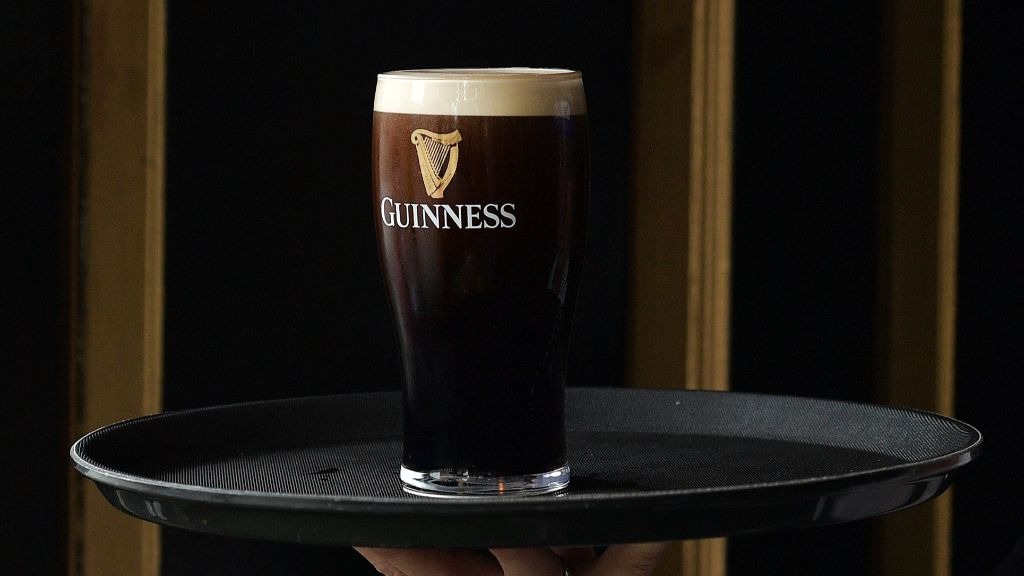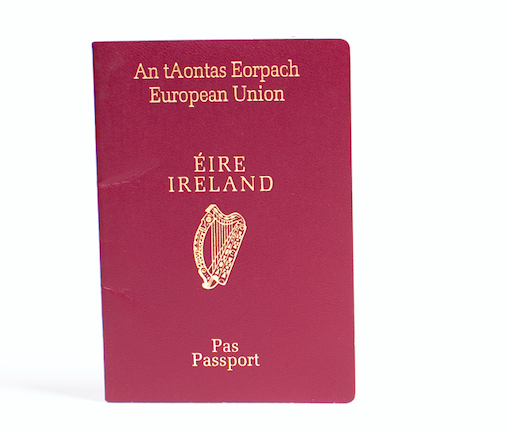THE golden harp once took pride of place in the centre of the green backdrop that made up the old Irish flag and is still used on a number of the nation’s buildings and monuments, including the seal of the office of the President.
Yet, despite its rich official history, it was first adopted by Guinness as the brand’s logo – long before the Irish state came into existence.
The harp was registered as the official symbol of the drinks giant in April 1862.
The first Guinness labels to be adorned with the harp were printed in August of that year according to 'Guinness's Brewery in the Irish Economy 1759-1876' by Patrick Lynch and John Vaizey.
They were so enthusiastic about the symbol that Guinness named its first lager ‘Harp’ in 1960.
 Alcohol exports to the UK were down 12 per cent in 2020, to €199 million
Alcohol exports to the UK were down 12 per cent in 2020, to €199 millionWhy the harp?
Though the Guinness company may have officially adopted the emblem ahead of the formation of an Irish government, its relevance to Irish history goes back almost 700 years.
In the ‘The Arms of Ireland: Medieval and Modern’, John Kennedy contends that the symbolic images political significance may stem from a fictional character, le Roi d'irelande, from the courtly legend of Tristan.
Alternatively, the author speculates it could also derive from a highly rated 13th century bardic poem, Tabhroidh Chugam Cruit mo Riogh, dedicated to Donnchadh Cairbreach O'Briain, a Gaelic King of Thomond.
Its first political usage can be traced back to 1642, when Owen Roe O’Neill, an Irish soldier and leader of the O’Neill clan, used it as a battle standard.
The harp remains the official national emblem of the Republic of Ireland, and was imprinted on the Republic's first currency, the Irish pound, that was replaced by the Euro in 2002.
It also featured prominently in the 1916 Easter Rising, where the harp was displayed on Irish flags, one of which can be found at the Inniskillings Museum.
There is, however, an important difference between the Irish government harp and the Guinness logo – one that could elude the untrained eye.
As the harp symbol was trademarked by Guinness in 1876, the Irish Free State Government, formed in 1922, had to flip the official government harp the other way around to distinguish it from the trademarked Guinness version.
Therefore, while the Guinness Harp has a straight edge on the left, the government harp has its straight edge on the right side.
 The Irish Government had to flip over their official harp image to distinguish it from the trademarked Guinness version
The Irish Government had to flip over their official harp image to distinguish it from the trademarked Guinness versionThe Guinness Harp
The harp is one of three parts of the Guinness brand’s livery.
The other two are the word ‘Guinness’ and Arthur Guinness’s calligraphic signature.
Guinness has tweaked the design of its harp over the years, including cutting a string or two.
The latest update was in 2005, when a new brand livery came into force.
Downhill Harp
The renowned Downhill Harp, played by the blind harpist Denis Hempson (or O’Hampsey) and dating back to 1702, was bought by Guinness in 1963 to ensure its preservation.
Hempson, who was blinded by smallpox at the age of three, began playing when he was 12 and went professional by the age of 18.
He played in the traditional style, using his long fingernails to pluck the metal strings.
By the ripe age of 97, he was the oldest harpist at the Belfast Harp Festival of 1792.
He is most famous for his concert for Prince Charles Edward Stuart, or ‘Bonnie Prince Charlie’, performed in 1745.
The instrument, which is 48-inches tall, bears the following inscription:
“In the time of Noah I was green,
Since his flood I had not been seen,
Until Seventeen hundred and two I was found By Cormac O Kelly underground:
He raised me up to that degree
That Queen of Musick you may call me.”

